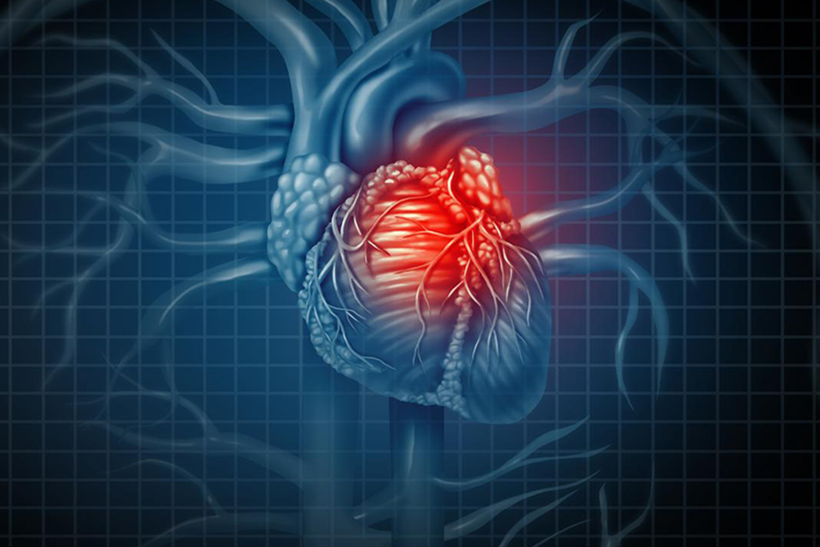Exploring the signs and symptoms of a heart attack, causes, physiological changes, tests, and treatments.
sign [ sahyn ]
noun
1. a token; indication
2. any object, action, event, pattern, etc. that conveys a meaning.
symptom [ simp-tuhm ]
noun
1. any phenomenon or circumstance accompany time something and serving as evidence of it.
2. a sign or indication of something.
3. Pathology. a phenomenon that arises from and accompanies a particular disease or disorder and serves as an indication of it.
Chest discomfort is the most common sign of heart danger.
The Mayo Clinic is a nonprofit organization committed to clinical practice, education and research, providing expert, whole-person care to everyone who needs healing. Mayo Clinic in Minnesota has been recognized as the best hospital in the nation for 2019-2020 by U.S. News & World Report. For this reason, we will use a majority of the information listed on the Mayo Clinic website as our point of reference for presenting facts throughout this feature.
Causes of a heart attack:
• Age: heart attacks are more likely when a man is over 45, and a woman is over 55.
• High cholesterol levels: these can increase the chance of blood clots in the arteries.
• Diabetes: high glucose levels can damage arteries and block blood flow.
• Diet: ex. consuming large quantities of saturated fats can increase the likelihood of a heart attack.
• Genetics: genetic mutations in a single gene and increase the likelihood of heart disease.
• Heart surgery: can lead to a heart attack later on is initially improperly performed.
• Hypertension: high blood pressure can put unnecessary strain on the heart.
• Obesity: being significantly overweight can put pressure on the heart.
• Previous heart attack: once one heart attack has happened, the risk of a second is high.
• Smoking: contributes to atherosclerosis and artery blockage of blood flow to the heart.
• HIV: accelerates aging of blood vessels although the link is poorly researched.
• Work stress: related to high blood pressure, unhealthy cholesterol levels and obesity.
Common heart attack signs and symptoms include:
• Pressure, tightness, pain: a squeezing or aching sensation in the chest or arms that may spread.
• Nausea: included can be symptoms of ingestion, heartburn or abdominal pain.
• Shortness of breath: an intense tightening in the chest or difficult breathing.
• Cold sweat: a chill feeling occurring along with abnormal sweating.
• Fatigue: an overall feeling of tiredness of lack of energy.
• Lightheadedness: a feeling of being faint, dizzy or passing out.
The physiological changes occurring when a heart attack is happening:
• Blood flow: arteries in the heart are not receiving appropriate blood flow.
• Blockage: often caused by a buildup of fat, cholesterol and other substances.
• Plaque:buildup in the arteries that feed the heart can also cause the blockage.
• Break away: plaque breaks away forming a clot that interrupts the blood flow.
• Damage: this all in turn causes damage or destroys part of the heart muscle.
American Heart Association Definitions Related to a Heart Attack:
• Agnina: chest pain/discomfort caused when the heart does not get enough oxygen-rich blood.
• Myocardial Infarction (“MI”): a heart attack is also called a myocardial infarction.
• Cardiac Ischemia: decreased blood flow (thus oxygen) to the heart muscle.
• Coronary Occlusion: coronary artery obstruction hindering blood flow to part of the heart.
• STEMI: a heart attack caused by complete blockage in a coronary artery.
• NSTEMI: a heart attack with a partially blocked artery, severely reducing blood flow.
Non-Invasive Diagnostic Testing and Procedures:
• Electrocardiogram (ECG or EKG): electrical recording of the heart to determine if a heart attack has happened, is going to happen, and monitors changes in heart rhythm.
• Echocardiogram (Echo): use of high frequency sound waves (ultrasound) to make pictures of the heart’s chambers, valves, walls and blood vessels.
• Chest X-Ray: a picture of the heart, lungs and bones of the chest showing location, size and shape of the heart, lungs and blood vessels.
• Cardiac Computed Tomography (CT): use of X-rays to make pictures of the heart. Images of the beating heart can be taken and show calcium blockages in the heart arteries.
• Positron Emission Tomography (PET): nuclear imaging test using radioactive tracers to produce pictures of the heart. Diagnose coronary artery disease and damage due to a heart attack.
• Magnetic Resonance Imaging (MRI): use of a magnetic field and radiofrequency waves to create detailed pictures of the structure of the heart and blood vessels.
• Single Photon Emission Computed Tomography (SPECT): use of radioactive tracers that are injected into the blood to show blood flow and how well the heart is working.
• Exercise Stress Test: also called a treadmill test, doctors find out how well your heart handles work. Test shows if the blood supply is reduced in the arteries supplying the heart.
Treatment of a Heart Attack:
The minutes after a heart attack are crucial. As time progresses, more heart tissue deteriorates and dies. It is important to restore blood flow quickly to help prevent further heart damage.
• Aspirin: take an aspirin to reduce blood clotting and help maintain blood flow through the narrowed artery.
• Thrombolytics: help dissolve a blood clot and increase the chances of survival with less heart damage.
• Nitroglycerin: treats chest pain (angina), helping to improve blood flow to the heart by widening the blood vessels.
• Beta Blockers: helps to relax the heart muscle, slow the heartbeat and decrease blood pressure.
Surgical intervention may be needed to treat a heart attack including coronary angioplasty and stenting or coronary artery bypass surgery.
American Online Benefits Group offers critical illness coverage in the event you or a covered family member suffer a myocardial infarction. We market to individuals and agents. Please contact our agent or member services to receive more information at 214-389-9072.




